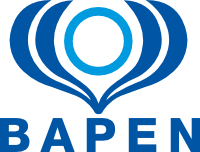Recognising those at risk is the most important first step. Once individuals and those involved in their care are aware of the problem, often simple measures to increase food intake may be enough to reverse the downward cycle.
Once the risk of malnutrition has been identified, a more detailed assessment is needed to detect any other factors that are contributing to the problem. Management should be tailored to the needs of the individual. In general, if a patient can take food and drink by mouth, then the first step would be to encourage a “Food first” approach. This may be in the form of advice on meals, snacks, nourishing drinks and food fortification, but should include setting goals of treatment and a plan for monitoring to ensure that these goals are met.
If food-based measures are ineffective or where the patient has a reduced appetite, an assessment and support from a dietitian may be needed. Oral nutritional supplements (ONS) may be considered by the dietitian to supplement oral intake from food. ONS are usually only used under the supervision of a dietitian or doctor. In one study, ONS have been shown to be effective in reducing complications associated with malnutrition, such as inflections, pressure ulcers, poor wound and fracture healing by around 30%. (Cawood et al, 2018). Vitamin supplements are also sometimes recommended by a dietitian or doctor where necessary.
Where patients are unable to take food and fluids by mouth, nutritional support may need to be provided by tube feeding. Tube feeding is usually given either into the gut (enteral nutrition) or directly into the bloodstream via a vein (parenteral nutrition). The exact method will depend on the patient’s individual needs.
Enteral tube feeding (Enteral Nutrition / EN)
The commonest type of enteral tube feeding a nasogastric tube. This is a tube that is passed through the nose and down into the stomach. This is often for short term feeding to provide nutritional support as a patient recovers from illness but may be used for longer depending on the patient’s needs.
For longer term feeding into the stomach, a Percutaneous Endoscopic Gastrostomy or PEG tube is sometimes placed through the abdomen directly into the stomach.
If the patient has a medical condition meaning it is not possible to use the stomach for nutrition, a jejunal tube may be needed, This is a tube placed in to the jejunum (the first part of the small intestine or small bowel) which bypasses the stomach. Jejunally placed tubes can either be nasojejunal tubes or jejunostomy tubes which are placed through the abdominal wall directly.
For more information on enteral feeding please visit the PINNT website.
Parenteral Nutrition (PN)
If a patient has a medical condition that means their gut cannot be used for nutrition, then parenteral nutrition (PN) may be needed. PN may be used for example, in patients who have lost part of their gut or in whom the gut does not work properly to be able to absorb nutrients. The sterile feed is given through a venous catheter which is a tube () placed in a vein, often a central vein. For most patients, PN is only given in the short term whilst they are in hospital for no more than a few weeks as they recover from illness. However, for a small number of patients, their medical condition is long term and PN is their only means of nutrition and hydration. For this reason some patients mayhave home parenteral nutrition (HPN).
For more information on PN and HPN please visit the PINNT website.


